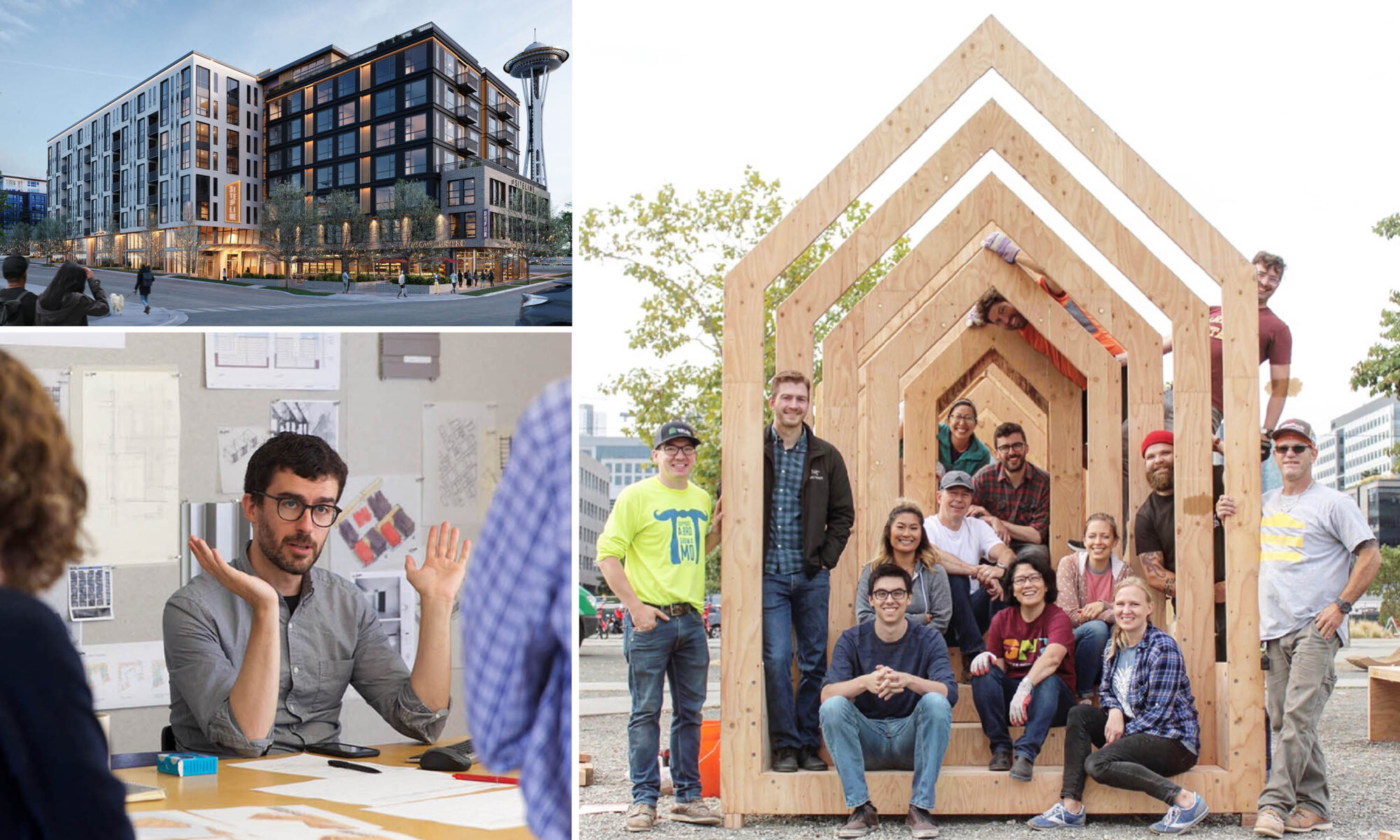Your gift powers design for all. As a volunteer-powered 501c(3) nonprofit, we rely on the generous giving of our supporters to bring free and affordable programs to 10,000+ people citywide every year.
- September 14, 2022
- Blog
Interview with Rob Deane – Sr. Assoc. at Encore Architects

As design enthusiast, who would rather sketch or diagram with you than just talk, Rob Deane has shepherded his clients, colleagues and community to envision their best ideas for the built environment. Always thoughtful, he steers conversations, distilling those ideas to further connect and bring together a cohesive design – whether it be a carefully crafted folly in the park, or a 200-unit building on an acre of land.
As an architect and owner at Encore Architects, he has learned the value of communicating space through trust and listening. His team focuses on multi-family, mixed-use, student and affordable housing projects, helping form the developing region around us.
He continues to value connections made through past leadership in the Young Architect’s Forum of AIA Seattle, and the board of the Seattle Design Festival. Rob enjoys his other time drawing his surroundings, playing music, adventuring with his family and finding humor in the world.
Question (Q): CONNECTION in design is…
Rob Deane (RD): Connection in design is critical to the success of a shared vision! The best outcomes for any design problem come from the voices of the community with which the design serves. In architecture, this is with the client, the governmental jurisdiction, and the community the project supports. It’s all connected!
Q: How does design influence CONNECTION?
RD: Design is best implemented by bringing communities together, connecting them. Some questions we ask ourselves as we draw and design; How do we create a sense of calm and personal connectedness at a building entry on a busy street? How does a building façade reflect the character of its surroundings? What community amenities are afforded for gathering space and connection to the neighborhood? As designers and architects, we strive to promote connection at the personal and community level.
Q: How do you use CONNECTION in your work?
RD: Lived space is the product of our work at Encore Architects – but to get to the space to live and connect in, the design team, client, contractor and community have to work together to craft this vision and build it in place – this long process necessitates a strong connection between team members – involving listening, patience and trust. At every schedule milestone, detail and sketch, it’s the bond between us that shows in every successful project. We lead the design team and strive for our built work to be sensitive to the community and stakeholders needs while promoting connection through lived space. I personally love drawing and sketching to connect ideas to those around me.
Q: Who or what inspires you?
RD: Those who can connect things to more than the sum of their parts.
Q: My favorite thing about my city is…
RD: …the identities of each of Seattle neighborhoods. My family enjoys exploring different areas of the city almost every weekend. Working on projects in particular neighborhoods is engaging to me personally, listening to identities and community values that would inform the built work.
Q: Tell us about a project that you completed that you are most proud of.
RD: Our office recently completed Unity Commons, the first of a two-phase affordable housing project in Olympia on Martin Way. The clients, the Low Income Housing Institute and Interfaith Works, partnered to create a 65-unit permanent supportive housing project with a 58-bed homeless shelter on the ground floor. The building is up and running, connecting those in need of shelter, permanent housing and case management services. The second phase is under development. It is an example of how the needs and values of two clients and the communities they support shaped our idea of a successful shared building.
I have also enjoyed the many Seattle Design Festival installations of past, working with different teams, contractors and community organizations. Each year’s theme promoted a unique and exciting response for connecting with the public. Each installation I have worked on has led to friends, new design skills and even connections with new projects. I was excited to see how our design community promoted connectedness this year!
Q: What design object or story most strongly influenced your interest in design?
RD: For my BSA Eagle Project, I had the opportunity to work on a children’s exhibit for the Virginia Discovery Museum that taught the ecosystems of carnivorous plants. Working with industrial designer Aaron Baker, and many volunteers, we framed over-sized pitcher plants and Venus fly traps out of plywood and foam. Kids could dress up as their favorite insect, learn about ecosystems, and ultimately get gobbled up by large plants. Sketching, building and scaling this world up was so wild! I learned space can delight, serve, and tell a story.
Q: What is your ultimate goal when it comes to your work? What do you want to contribute?
RD: I hope that spaces I help craft serve their communities and bring delight to the client and community.
Q: If you could have one superpower what would it be and why?
RD: Captain Photoshop – being able to draw/copy/paste/lasso/layer the world in real time to make it a better place. Perhaps the power of bringing whatever I drew to life.
Q: How should community influence design?
RD: Community should inherently be part of the design process. Personally, and at Encore Architects, this involves listening and trust.
